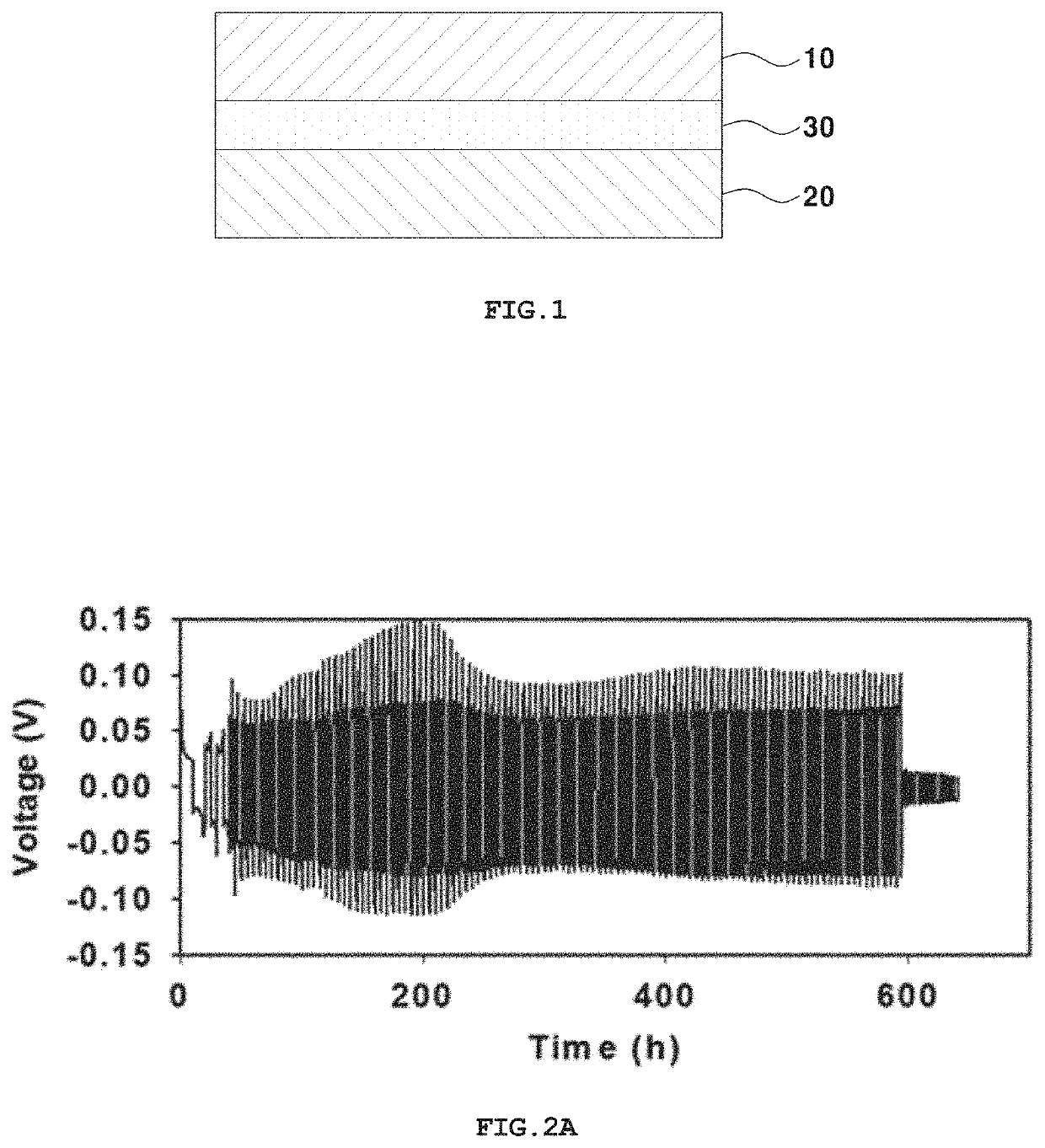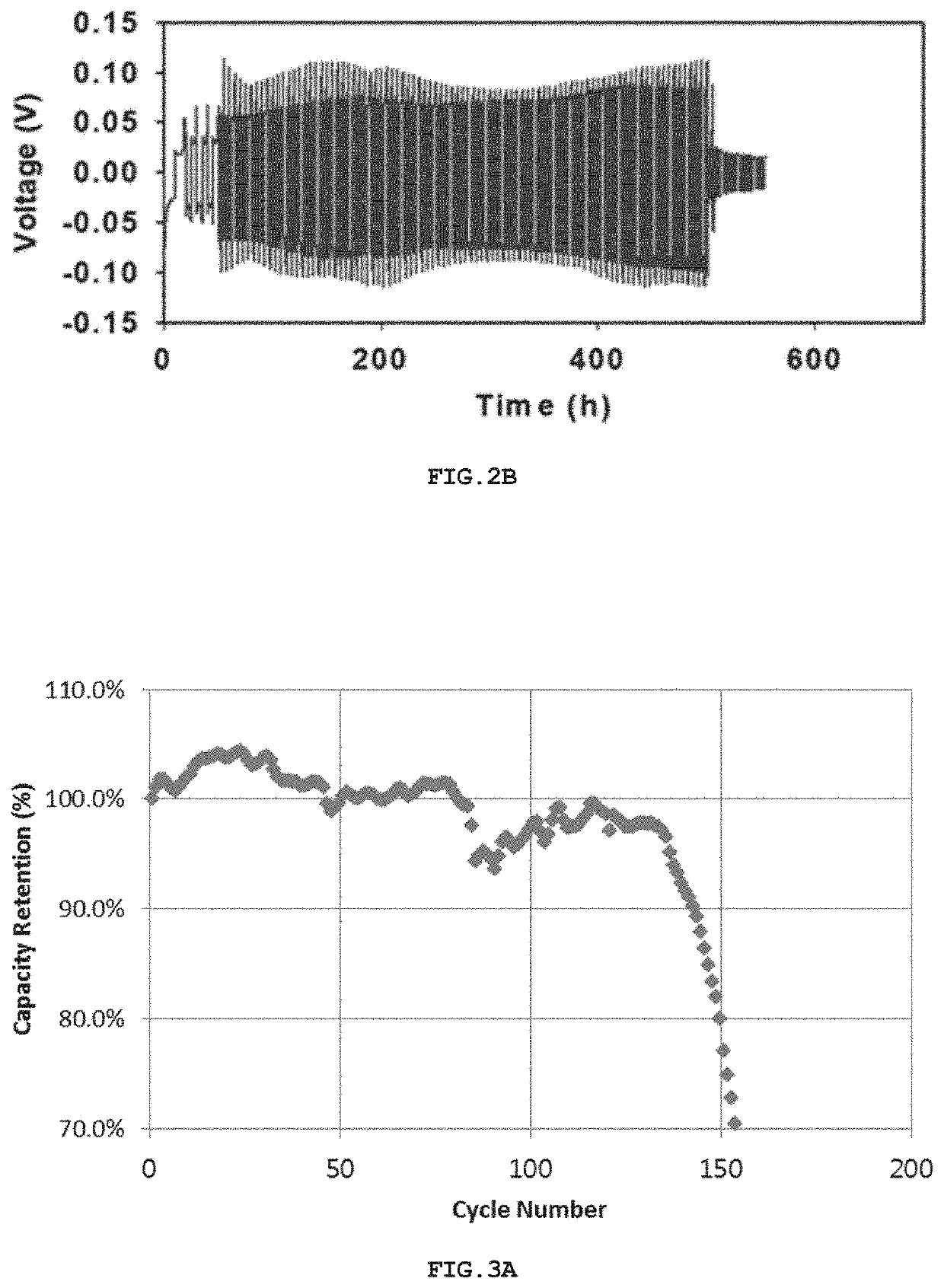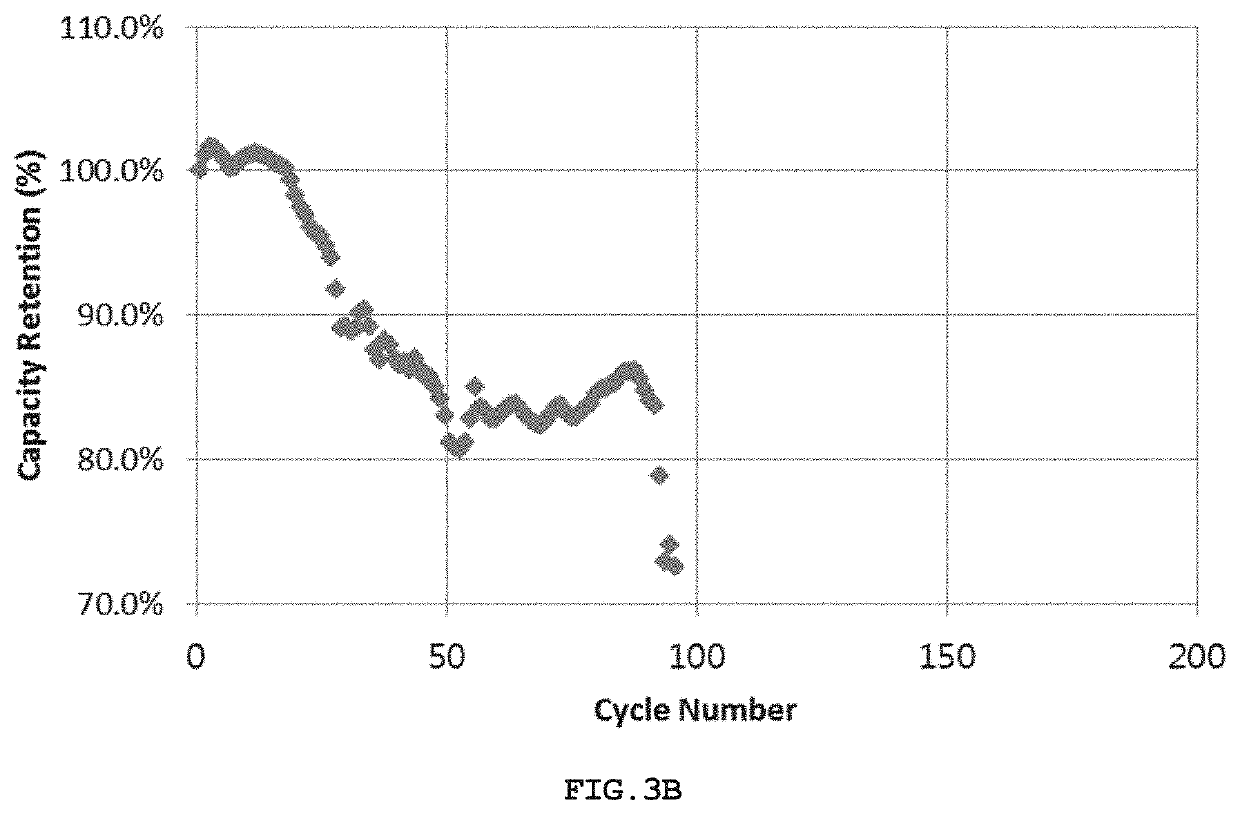Electrolyte for lithium-metal battery having improved stability
- Summary
- Abstract
- Description
- Claims
- Application Information
AI Technical Summary
Benefits of technology
Problems solved by technology
Method used
Image
Examples
preparation example
[0061]1,2-dimethoxyethane as an organic solvent was mixed with 1,1,2,2-tetrafluoroethyl-1H,1H,5H-octafluoropentyl ether (TFOFE) as a cosolvent at a volume ratio of 8:2. Then, 2.5 M LiFSI as a lithium salt and 0.3 wt % of lithium difluorophosphate (LiPO2F2) as an additive were added thereto, thereby preparing an electrolyte.
example 1
Li / Cu Half-cell
[0063]An anode was manufactured by rolling lithium metal having a thickness of about 100 μm on a copper foil current collector. A copper foil having a thickness of about 20 μm was used as a cathode, and a polyethylene separator was interposed between the anode and the cathode to afford a laminate. About 40 μl of the electrolyte of Preparation Example was injected into the laminate. The laminate was pressed, thereby manufacturing a coin-type 2032 cell as a lithium-metal battery.
example 2
Li / Li Symmetric Cell
[0064]A lithium-metal battery was manufactured in the same manner as in Example 1, with the exception that lithium metal having a thickness of about 100 μm was used as the cathode.
PUM
 Login to View More
Login to View More Abstract
Description
Claims
Application Information
 Login to View More
Login to View More - Generate Ideas
- Intellectual Property
- Life Sciences
- Materials
- Tech Scout
- Unparalleled Data Quality
- Higher Quality Content
- 60% Fewer Hallucinations
Browse by: Latest US Patents, China's latest patents, Technical Efficacy Thesaurus, Application Domain, Technology Topic, Popular Technical Reports.
© 2025 PatSnap. All rights reserved.Legal|Privacy policy|Modern Slavery Act Transparency Statement|Sitemap|About US| Contact US: help@patsnap.com



